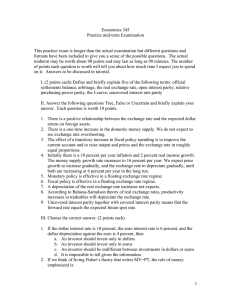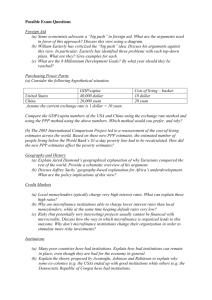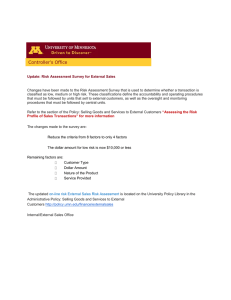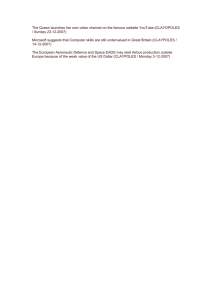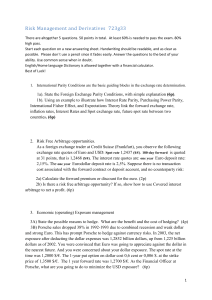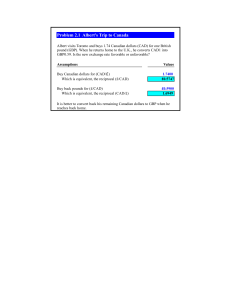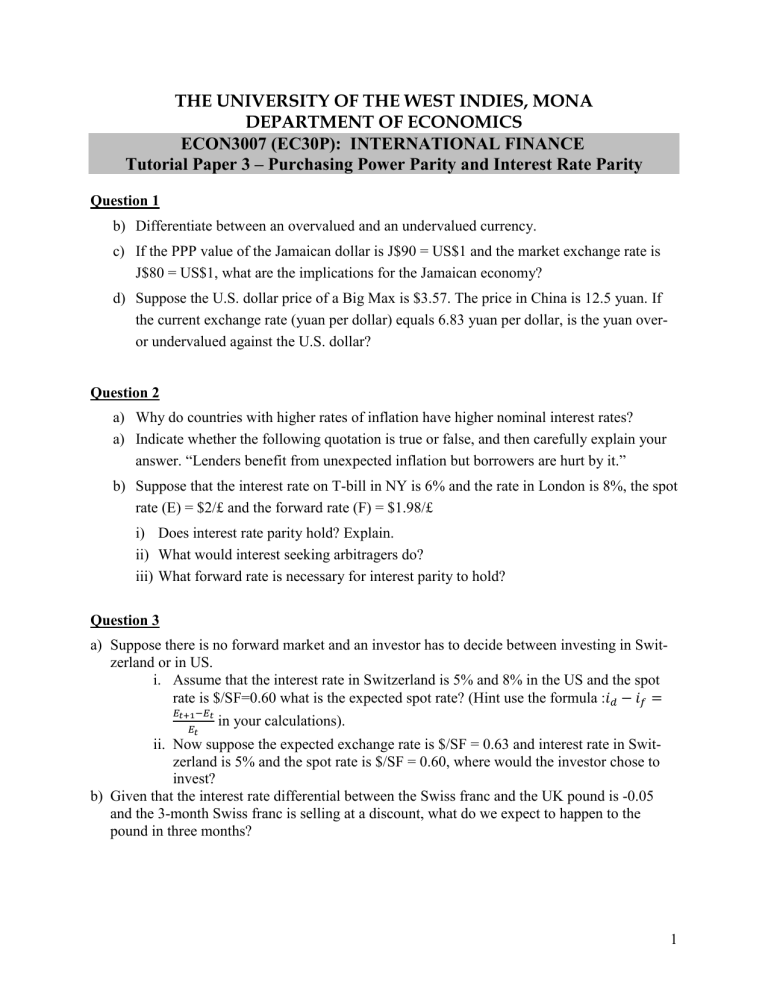
THE UNIVERSITY OF THE WEST INDIES, MONA DEPARTMENT OF ECONOMICS ECON3007 (EC30P): INTERNATIONAL FINANCE Tutorial Paper 3 – Purchasing Power Parity and Interest Rate Parity Question 1 b) Differentiate between an overvalued and an undervalued currency. c) If the PPP value of the Jamaican dollar is J$90 = US$1 and the market exchange rate is J$80 = US$1, what are the implications for the Jamaican economy? d) Suppose the U.S. dollar price of a Big Max is $3.57. The price in China is 12.5 yuan. If the current exchange rate (yuan per dollar) equals 6.83 yuan per dollar, is the yuan overor undervalued against the U.S. dollar? Question 2 a) Why do countries with higher rates of inflation have higher nominal interest rates? a) Indicate whether the following quotation is true or false, and then carefully explain your answer. “Lenders benefit from unexpected inflation but borrowers are hurt by it.” b) Suppose that the interest rate on T-bill in NY is 6% and the rate in London is 8%, the spot rate (E) = $2/£ and the forward rate (F) = $1.98/£ i) Does interest rate parity hold? Explain. ii) What would interest seeking arbitragers do? iii) What forward rate is necessary for interest parity to hold? Question 3 a) Suppose there is no forward market and an investor has to decide between investing in Switzerland or in US. i. Assume that the interest rate in Switzerland is 5% and 8% in the US and the spot rate is $/SF=0.60 what is the expected spot rate? (Hint use the formula :𝑖𝑑 − 𝑖𝑓 = 𝐸𝑡+1 −𝐸𝑡 𝐸𝑡 in your calculations). ii. Now suppose the expected exchange rate is $/SF = 0.63 and interest rate in Switzerland is 5% and the spot rate is $/SF = 0.60, where would the investor chose to invest? b) Given that the interest rate differential between the Swiss franc and the UK pound is -0.05 and the 3-month Swiss franc is selling at a discount, what do we expect to happen to the pound in three months? 1

